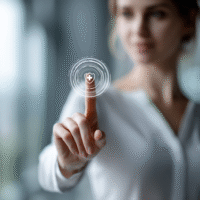Study Overview
This study looked at how two types of massages—ice massage and dry massage—help MMA fighters recover during short breaks in their matches. The fighters go through intense rounds, and the study aimed to see which method helps them recover better.
Key Findings
- Reactive Strength Index (RSI): Both massage types helped fighters maintain their strength better after exercise.
- Muscle Properties: Massage reduced muscle stiffness and tension, while ice massage was less effective for elasticity but improved pain tolerance.
- Jump Performance: Fighters who received massages were able to jump more times compared to those who rested.
Practical Healthcare Results
Both ice and dry massage can significantly aid recovery for fighters after strenuous activity. However, dry massage was found to be more effective in keeping muscles flexible and less tense.
Measurable Outcomes
- Improvement in jump performance after massage.
- Reduced muscle stiffness and tension.
- Increased pain tolerance following ice massage.
Goals for Clinics and Patients
Clinics should aim to incorporate both ice and dry massage into recovery protocols for athletes, especially those in combat sports, to enhance performance and reduce injury risks.
AI Tools for Clinical Needs
Consider using AI solutions to track recovery outcomes and optimize massage techniques based on individual athlete responses.
Implementation Steps
- Start with a pilot project to test the effectiveness of ice and dry massage in your clinic.
- Use AI to monitor results and make adjustments as needed.
- Expand the program based on successful outcomes.
Contact Us for AI Solutions
For more information on implementing AI in medical management, reach out to us:































